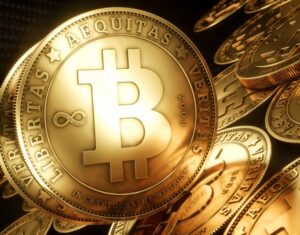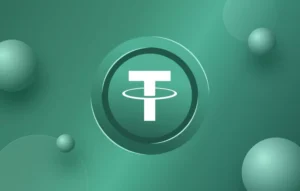Crypto financial dictionary. Terms related to trading and financial markets
Terms related to trading and financial markets, with a focus on the increasingly important world of cryptocurrencies.
51% Attack
Also known as a majority attack.
Occurs when a miner or group of miners controls more than 50% of the mining hashrate or computing power of the network.
Airdrop
Distribution of tokens by cryptocurrency network operators.
The tokens are given away to all cryptocurrency holders or awarded upon completion of certain activities, such as promoting the cryptocurrency on a social network.
Algorithm
A sequence of unambiguous instructions used to solve a problem.

Altcoin
Any cryptocurrency other than bitcoin is called an “altcoin” (derived from “alternative currency”).
There are hundreds of “altcoins” that investors around the world can invest in, such as XRP, NEO, Stellar, and many others
American Option
An option that can be exercised on any trading day, at or before expiration
Anti-Money Laundering (AML)
A framework of legal and regulatory procedures designed to minimize and prevent the flow of funds generated by illegal or questionable activities.
ARC-20
This is a token standard for fungible tokens (colored coins) on the Bitcoin network.
ASIC
The acronym for Application Specific Integrated Circuit.
An ASIC is a chip designed to perform a specific task.
In the blockchain world, it usually refers to chips designed to run on computers used for data mining and is considered superior to central processors and GPU.
Asset Under Management (AUM)
Asset Under Management (AUM) is the market value of financial assets managed by a firm on behalf of clients, and represents influence and operational scale.
Automated Market Maker (AMM)
Automated decentralized exchanges (AMMs) are a subset of DEXs.
They allow users to trade digital assets directly with each other without the need for an intermediary.
B-Token
B-Token is the name of a series of fully-secured, wrapped tokens minted by Binance.
Bank for International Settlements (BIS)
An international organization that promotes monetary and financial cooperation and serves as a bank for central banks.
The BIS often acts as an intermediary in the foreign exchange market, allowing central banks to disguise their identities in an effort to reduce market impact.
Barrier Option
A type of “exotic” option that is realized or expires when a specified price is reached.
They are often added to a “traditional” option to make the premium less expensive.
For example, a EUR/USD call at 1.4000 bought when the spot is at 1.3500 would be cheaper if there was a knock-out embedded in the option, say at 1.3300.
If 1.3300 is traded before the option expires, the option itself would be “knocked out” and the option seller could collect the full premium.
Beacon Chain
This is the Proof of Stake (PoS) layer of Ethereum where consensus is reached.
The Beacon Chain controls and coordinates the network of Ethereum stakers who help validate and protect the network in exchange for staking rewards.
BEP-20
BEP-20 is a token standard on the BNB Smart Chain that extends ERC-20, the most common standard for Ethereum tokens.
It can be considered a model for tokens that defines how they can be used, who can use them, and other rules for their use.
Due to its similarity to the BNB Beacon Chain’s BEP-2 and Ethereum’s ERC-20, it is compatible with both.
BEP-721
This is a technical standard that defines a set of rules for issuing NFTs in the BNB Smart Chain ecosystem.
BEP-95
BEP-95 is a Binance Evolution Proposal that introduces a real-time burning mechanism on the BNB Smart Chain.
Bid
A purchase order placed at or below the market price.
Bifurcation
Because the blockchain is decentralized, any change to the network must be approved by its users in order to be implemented.
If enough users agree to an improvement or change in the code, that change is implemented throughout the network.
A change that continues to support previous versions of the network is called a soft fork, while a change that does not support previous versions is called a hard fork.
Sometimes, if there is a divergence in the community regarding a fork, the result can be the creation of a new parallel blockchain.
This is the case with Bitcoin Cash and Ethereum Classic.
Bitcoin
The first and largest cryptocurrency by market capitalization.
Launched in 2009 as a decentralized currency created with blockchain technology, it is the largest cryptocurrency by market capitalization
Bitcoin Maximalists
Bitcoin maximalists are people who believe that this cryptocurrency is the only one with intrinsic value and that it represents the future of global finance.
Blockchain
A decentralized network created by a continuous chain of code segments of a predetermined size (blocks).
All transactions in the network are stored in a public ledger that is accessible to all nodes in the network, eliminating the need for a central server to authorize transactions
BOC
Bank of Canada
BOE
Bank of England
Bond
A type of fixed-income investment that represents a loan to a borrower, usually a company or government.
BOJ
Bank of Japan
Buba
Nickname for the Bundesbank, Germany’s inflation-obsessed central bank.

Burner Wallet
A temporary cryptocurrency wallet for potentially risky transactions.
Cable
Nickname for GBP/USD.
This term originated from the use of transatlantic cables for currency transactions a few years ago.
Anyone using terms like “cable-yen” or “euro-cable” should be considered an amateur.
Call Option
An option that gives you the right to buy something at a predetermined price.
Candidate Blockchain
A temporary block created by a mining node (miner) to be added to the blockchain in order to receive block rewards.
Central Bank Digital Currency (CBDC)
A Central Bank Digital Currency (CBDC) is an officially authorized digital currency issued by a sovereign central bank.
CBDCs can be used for wholesale or retail exchanges.
Clearer
One of the four major UK banks (Barclays, Lloyds, HSBC and RBS).
Historically, they were the main clearers of paper checks.
Cold storage
A security measure for storing cryptocurrency in an offline environment.
This can be a storage device (such as a USB flash drive) or a paper w
Consent
Because much of the data in a public blockchain network is stored simultaneously in different areas of the network, all members must have the same copy of these code segments (like a public ledger) throughout the network.
Contango and Backwardation
Contango and backwardation are terms used to describe the relationship between the futures price of a commodity and its expected future spot price.
They are useful metrics for trading, hedging and arbitrage.
Corporates
The treasury departments of large multinational corporations.
They are responsible for hedging their companies’ foreign currency exposures, and any disruption in these can have a dramatic impact on the profits of companies with large foreign sales..
One example is Airbus, which has large revenues in dollars, but most of its costs are in euros.
To try to offset this mismatch, the company must hedge its foreign currency exposures.
Cross-Chain Bridges
Blockchain bridges connect different blockchain networks, enabling the transfer of digital assets between networks and promoting interoperability in the cryptocurrency industry.
Cryptography
The science of using mathematical and computational theories to encrypt and decrypt information.
Cryptocurrency
The first major application of blockchain technology is a cryptocurrency, which is designed to have no centralized ownership and consists of uniquely encrypted tokens and transactions.
Blockchain technology is the infrastructure that allows cryptocurrencies to be stored and tokens to be transacted on the network.
Crypto Winter
The term “crypto winter” refers to a prolonged period of falling or stagnant prices and negative sentiment in the cryptocurrency market.
Custodian Bank
A bank that holds securities for other financial institutions, maintains their accounts, and regulates their trading activity.
Examples include The Bank of New York Mellon, State Street and Northern Trust Co. also known as custodians.
Custody
Refers to the holding of assets on behalf of a client.
It can also refer to the ownership of one’s own funds or assets.
DAO
The acronym for Decentralized Autonomous Organization.
This term describes an organization that uses blockchain practices, such as smart contracts, to manage itself autonomously without the need for a central authority.
Dapps
Short for Decentralized Apps. Basically, these are programs that use the blockchain to create any type of application that runs on a decentralized network.
Decentralized Application (DApp)
DApps are applications that run on a P2P network of computers rather than on a centralized database.
Users can freely connect to DApps using cryptographic wallets.
Delta
The ratio of the change in the price of the underlying asset to the corresponding change in the price of a derivative.
Sometimes referred to as the “hedge ratio”.
Depression
A prolonged and severe contraction in economic activity.
Diamond Hands
The term “diamond hands” refers to holding a financial asset and not wanting to sell it, regardless of its volatility.
Digital Signature
A cryptographic tool that verifies the authenticity and integrity of digital data, ensuring the security of cryptographic communications and transactions.
Double No-Touch (DNT)
This is an option strategy where the owner of the asset pays if prices stay within a pre-defined range during the life of the contract.
For example, a DNT 1.30/35 will pay out if prices do not move outside the predefined range during the life of the contract.
Dovish
Statement regarding monetary policy that implies a more accommodative policy (lower interest rates).

Ecofin
This is a council made up of the European Union’s economy and finance ministers.
It meets once a month.
EigenLayer
This is a blockchain protocol that introduced the concept of a “retake collective” to Ethereum.
EIP-3074
An Ethereum Improvement Proposal (EIP) aimed at improving transaction authorization processes.
EIP-4844
EIP-4844, also known as Proto-Danksharding, is a proposed update that focuses on reducing Ethereum fees and increasing transaction speed.
Ethereum Classic
Ethereum Classic (ETC) emerged from the well-known hard fork of Ethereum that occurred after the hack of The DAO in 2016.
Unlike ETH, ETC still uses Proof of Work.
Eurogroup
Group of finance ministers from the member countries of the Eurozone.
European (Option)
An option that can only be exercised when it expires.
European Financial Stability Facility (ESFS)
Legal instrument adopted by the 27 Member States of the European Union on May 9, 2010, to preserve financial stability in Europe and provide financial assistance to euro area countries in difficulty.
Expiration Date (Option)
If the option is not exercised by the expiration date, it expires and loses its validity.
Externally Owned Account (EOA).
A type of account on the Ethereum blockchain that is controlled by a private key.
Fade
To trade against the trend. For example, to “fade a trend” is to go against the trend itself.
To fade a rumor is to believe it is false and do the opposite of what the rumor suggests.
Fibonacci Retracements
A useful tool for traders when markets correct during trends. Technicians look for support on pullbacks at 38.2% of the uptrend or bounces in a downtrend, at 50% and 61.8%.
This concept is derived from the “golden ratio” of Italian mathematician Fibonacci.
Fixing
A predetermined time of day when bids and offers are aggregated and settled at a published price.
The most common fixes are the ECB fix at 12:15 GMT and the London fix at 16:00 GMT.
The fixes are primarily used by asset managers.
They have a fiduciary responsibility to ensure best execution for their clients, and the fix is considered the most transparent price of the day. The reference price is published by WM Company.
Fork
A fork is a divergence in the blockchain network that creates a split in the transaction history.
There are two types of forks : hard forks and soft forks.
Fundamental Analysis (FA)
The evaluation of an asset based on its underlying characteristics and attributes in order to determine its intrinsic value.
Gamma
The concepts of the options markets are expressed in terms of the Greek alphabet.
Gamma indicates the change in the delta of an option relative to the price of the underlying asset.
A short gamma position shortens as the price of the underlying asset rises.
As the market rises, more and more of the underlying asset is actually sold as the delta becomes increasingly negative.
GDP Deflator
A measure that shows how much prices in a country have increased over time.
Genesis Block
The first block of code created in a blockchain-based network.
Haircut
In lending, it indicates the difference between the value of a loan and the value of the collateral pledged to secure the loan.
Hard landing
A situation in which an economy moves rapidly from growth to slow growth or recession.
Hawkish
A monetary policy statement that implies tighter policy, i.e. higher interest rates.
ICO
Initial Coin Offering. A situation in which a company raises funds by issuing tokens or a cryptocurrency that are sold to initial investors at a fixed price.
IMM
A division of the Chicago Mercantile Exchange dedicated to the international money market.
This is the exchange where most of the world’s currency futures trading takes place.
Each week, net positions on the exchange are compiled and reported in the Friday afternoon Commitments of Traders report
Index Fund
This is a type of mutual fund designed to track the performance of a specific market index, such as the S&P 500.
JGB
Japanese government bonds.
Kampo
A branch of the Japanese postal savings system.
These are institutional investors who allocate large amounts of Japanese savings to overseas investments.
They are sometimes thought to be acting on behalf of the government in the foreign exchange markets to influence exchange rates for the benefit of the Japanese economy. They are sometimes referred to as “semi-official” or “quasi-official” market participants.
Key Out-of-Day Reversal
This type of reversal occurs when the market breaks out of a trend high or trend low.
A key out-of-day reversal occurs when a market makes a new high, then reverses down, erases the previous day’s low, and closes below the previous day’s close.

Know Your Customer (KYC)
A standard practice in the financial industry that enables companies to identify their customers and comply with anti-money laundering laws.
Lightning Network
The Lightning Network greatly increases the speed of transaction processing time in a network based on blockchain technology.
It creates a peer-to-peer (P2P) network to process transactions before they are transmitted for recording in the underlying blockchain ledger.
Liquidity Crisis
A liquidity crisis is a financial situation in which an individual, organization, or market faces a liquidity shortage that makes it difficult to meet immediate financial obligations.
Liquidity Provider
Liquidity Providers (LPs) are entities or individuals that provide buy and sell orders to financial markets to increase their liquidity and ensure their efficiency and stability.
Limit Order
This is a type of order to buy or sell an asset at a specified price or better.
Loonie
Nickname for the Canadian dollar.
The name comes from the image of a loon on the $1 coin.
What do you call a $2 coin?
Obviously, a twonie.
Market Capitalization
The total trading value of a given currency, calculated as the product of the supply of the currency and the current price.
Market Order
When a buyer selects the best bid or ask for a cryptocurrency, the price and quantity available are announced by the order book.
Mining
It consists of using computing power to perform transactions on the network and receive tokens as a reward.
Each transaction is encrypted by an equation, and the process requires significant computing power.
The first miner to solve the equation and complete the transaction is rewarded with a small fee.
Minting
Minting adds new tokens to the cryptocurrency ecosystem that can be traded or used within the network.
Minting is similar to mining, but has some key differences.
Model Fund
Hedge fund that uses a quantitative model to initiate and execute trades.
The best-known type of fund is the trend follower, such as J.W. Henry and Co. Many of these funds trade at specific times during the day, often at 10 a.m. New York time.
Node
A computer connected to the network that maintains a copy of the blockchain ledger.
Nodes are distributed throughout the network to maintain its decentralized format.
Old Lady
Nickname for the Bank of England.
“The Old Lady of Threadneedle Street”.
Operation Twist
This is a monetary policy operation, not used since the early 1960s, in which the Fed sold shorter-term Treasury securities and bought longer-term Treasury securities in order to lower long-term interest rates.
This operation did not affect the overall size of the Fed’s balance sheet.
Option
A derivative financial instrument involving a contract between two parties for a future transaction in an asset at a reference price.
The buyer of the option acquires the right, but not the obligation, to enter into the transaction, while the seller assumes the corresponding obligation to execute the transaction.
The price of an option is derived from the difference between the reference price and the value of the asset (usually a stock, bond, currency, or futures contract) plus a premium based on the time remaining until the option expires.
Over-The-Counter (OTC)
This is a transaction between two private parties that is not listed on an exchange.
The terms of an OTC option are unlimited and can be customized to meet any business need.
Typically, at least one of the counterparties to an OTC option is a well-capitalized institution.
Paper wallet
A cold storage solution is considered one of the most secure ways to store cryptocurrencies.
The wallet can be printed on any printer and contains the user’s private key and public key encoded with a QR code.
To access their funds, users simply scan the wallet.
Peer-to-Peer (P2P)
Consists of the exchange of information within a network directly between two parties, without the need for a server through which the data passes.
Permissionless Blockchain
Permissionless blockchains are open networks that allow anyone to participate in the consensus process without the need to obtain approval, permission or authorization.
Plain Vanilla Option
The simplest type of option, with an expiration date and an exercise price, and no additional features.
Price Maintenance Operations (PKO)
Usually refers to Japanese authorities intervening in stock markets (and sometimes foreign exchange markets) to maintain a certain price level.
Prime Broker
Companies that allow clients, such as hedge funds, to use their lines of credit to access financial markets.
For example, a hedge fund client of Bank X can trade in the interbank FX market using Bank X’s name for a fee.
Private Key
Each user on the network has his or her own private key, which is the equivalent of a password.
Only the user knows his or her private key, which corresponds to the password.
Processing (Hash)
The practice of using an algorithm to assign a “fingerprint” to any piece of data. When storing information on a blockchain, processing is used to create a consistent way to identify blocks of code by converting them into a fixed-size string of numbers and letters.
Public Key
A security measure to store cryptocurrency in an offline environment.
This can be a storage device (such as a USB flash drive) or a paper wallet.
Pump and Dump
Fraudulent practice in which the price of an asset is artificially inflated and dumped, causing a sudden and significant drop in value.
Put Option
An option that gives the right to sell something at a specific price.

Quantitative Easing
Strategy used by central banks when targeting short-term interest rates becomes ineffective because rates have reached zero (or near zero).
The central bank buys assets, usually government bonds, to inject money into the economy.
RBA
Reserve Bank of Australia (central bank)
Real World Assets (RWA)
Real World Assets (RWA) are tangible physical assets with intrinsic value, such as real estate, commodities, or works of art, that are tokenized for use on the blockchain.
Recession
A prolonged period of significant decline in economic activity.
Reflation trade
Consists of buying asset classes that investors expect to perform well in the event of an economic recovery.
Examples include commodities, equities and emerging markets.
Asset classes to avoid in a reflationary environment are bonds and low-yielding currencies.
Sahm Rule
An indicator used to identify the early stages of a recession.
SegWit
Short for “Segregated Witness”, which is Italian for “segregated witness”.
This term refers to a solution that increases the speed of a blockchain network.
SegWit could be implemented as a soft fork in a blockchain network, improving its functionality without creating a new cryptocurrency or making previous versions of the network incompatible with each other.
Slippage
When a trade is settled at a different price than originally requested or expected, typically occurring in illiquid markets and when market orders are used.
Smart Contract
An algorithm that uses blockchain technology to automatically execute a specific contract.
If the terms of the contract are met, it is executed and the parties involved receive the agreed-upon premium.
It was Ethereum’s blockchain network that popularized the use of smart contracts.
SNB
Swiss National Bank, the central bank of Switzerland.
Sovereign Wealth Fund (SWF)
A fund established by a country with large foreign exchange reserves to help manage those reserves.
Typically, SWFs buy long-term securities to try to earn higher returns than central banks earn on government debt. Examples of SWFs include the Government of Singapore Investment Company and the Abu Dhabi Investment Authority.
SPL
Solana Program Library (SPL).
A set of rules and protocols that govern the behavior and interaction of tokens on the Solana network.
Spin-Out (also known as Spin-Off or Starburst)
Type of corporate transaction in which a company “spins off” parts of itself as a separate business, becoming an independent company.
Shareholders of the parent company receive equivalent shares in the new company in exchange for the original shares they owned, potentially making investment in the companies more attractive as potential stock buyers can only invest in the part of the company they believe will have the most growth.
Strike Price (option)
The reference price at which the underlying asset can be traded.
The process of activating an option and then trading the underlying at the agreed price is called exercising.
Options have an expiration date.
If the option is not exercised by the expiration date, it becomes null and void.
Stop Loss
An order to close a market position when a specified price level is reached.
For example, a sell order placed below the market price to protect against accelerating losses.
Sybil Attack
A cyber attack in which an entity creates and controls fake identities or nodes on a P2P network to gain greater influence.

Token
An individual currency associated with a specific blockchain network that represents the cryptocurrency of that network and gives value to transactions made within the network.
For example, the token of the Litecoin network is called LTC.
Token Standards
Learn about the ERC-20, ERC-721, BEP-20 and TRC-20 token standards in blockchain networks.
Toshin
Japanese mutual funds that invest in non-yen denominated assets.
Transaction Fee
Because transactions on the blockchain network require a lot of computing power, network miners compete for the right to process transactions by offering their computing power.
TrueUSD (TUSD)
TrueUSD is a stablecoin pegged to the US dollar.
It is integrated with multiple blockchain networks and is one of the fastest growing stablecoins.
Wallet
An online program or a native client program that allows users to store, transfer, and control their balance.
Some wallets support a specific cryptocurrency, while others support multiple cryptocurrencies on a single platform.
White Paper
A document that serves as a report or guide to solving a complex problem.
In the cryptocurrency world, a white paper is a description that aims to convey the vision, plan or structure of a cryptocurrency or blockchain network.
Writing (or Selling) an Option
In exchange for assuming the obligation, called writing the option, the writer of the option receives a payment, or premium, from the buyer.
The writer of an option must settle upon delivery (or receipt) of the underlying asset or its cash equivalent if the option is exercised.
Yard
In market jargon, the term means a billion.
